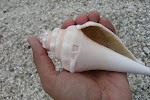
Guy: Do you see that vine with the balloon looking things hanging on them?
Gal: Yeah, what about them?

Guy: Let me get one for you. Now open it and what you find inside will tell you how I feel about you (wink* wink*).
Gal: Ok...
Gal: Ok...


Gal: Oh, wow!
Guy: There are three hearts meaning: "I...love...you."
Gal: Awww! I LOVE YOU TOO!
My friend Sean says that I am full of lore when we go hiking. Well, I guess I just like to share and talk stories. That scenario is probably one of the best ones to share with people as you introduce them to the sights of Saipan. I actually owe this bit of lore to my little brother, Patrick who used to call them "love seeds". It took a while for me to find information about this particular vine and the internet finally caught up with several articles about them.
They are called Balloon Vine and their scientific name is Cardiospermum halicacabum. Cardiospermum translates to "heart seed" and the funny name halicacabum is Greek for "salt barrel" referring to the round fruit. They are also called heart pea or love-in-a-puff. In Mexico they are called frolitos which means "little lanterns."
Balloon vine is native to North and tropical America but has been distributed pan tropically. It has been naturalized here in the CNMI and doesn't seem to bee too invasive to the native environment. On Saipan, you can find them creeping in gardens and roadsides. They may or may not be native to Hawaii and I am still researching what their local names for the plant means. Anyone know what haleakai‘a, ‘inalua, pōhuehue uka, or pōniu means?

 I found these ones climbing on a friend's wire-linked fence so you really can find them here and there.
I found these ones climbing on a friend's wire-linked fence so you really can find them here and there.
Balloon vine is a year round (perennial) creeping vine that has trifoliate 4 cm leaves and paired tendrils that help them climb. The flowers are white and minute at 3 mm. The three-sided balloon-like fruits are about 3 cm in diameter which holds usually three of the characteristic black seeds with white hearts that look like they were painted on. The hearts are actually the hilium, or the scar that is the point of attachment for the seed to the fruit.


Balloon vine is part of the Sapindacea or Soapberry family, a group of plants contain saponin, a chemical that produces a soapy froth when mixed with water. Saponin is mildly toxic and can hemolyze blood but it is mostly found in the sap of the plants which doesn't stop us from enjoying the most well known members of the family which are the delicious lychee, longan and my favorite, the rambutan. C. halicacabum tincture is also used in anti-inflammatory ointments and gels as treatment for itchy skin conditions like eczema, neurodermatitis, psoriasis and allergic skin reactions.
WARNING: If you try this lore on someone make sure you look at the pictures so that you'd be able to tell C. halicacabum from what appears to be C. grandiflorum. C. grandiflorum or Showy balloonvine has bigger leaves (2.5 - 10 cm) and bigger more angled seed capsules (4.5 - 6.5 cm). The seeds don't always come in threes and the hearts aren't as white and shapely. I've seen C. grandiflorum on the way to Ladder Beach, the cliffs of Old Man by the Sea, and San Antonio Beach.
 Look closely at the differences. The lore won't be as good or won't always work if you pick these instead!
Look closely at the differences. The lore won't be as good or won't always work if you pick these instead! The hearts aren't as bright and formed as you can see here plus there were only two seeds.
The hearts aren't as bright and formed as you can see here plus there were only two seeds.
Thank you for letting me share one of my favorite lore.
The Beachcomber
The Beachcomber

